My
List |
Addition Date
|
Target
|
Mission
|
Instrument
|
Size
|

|
2018-04-11 |
Charon
|
New Horizons
|
|
2380x1056x3 |
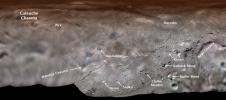
|
-
PIA00442:
-
Charon's First Official Feature Names
Full Resolution:
TIFF
(6.035 MB)
JPEG
(309.7 kB)
|

|
2018-01-04 |
2014 MU69
|
New Horizons
|
|
2400x1200x3 |

|
-
PIA22190:
-
New Horizons Encountering 2014 MU69 (Artist's Impression)
Full Resolution:
TIFF
(4.627 MB)
JPEG
(248.2 kB)
|

|
2017-12-10 |
|
New Horizons
|
|
1254x555x3 |
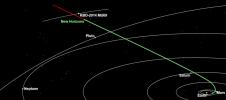
|
-
PIA22188:
-
New Horizons Corrects Its Course in the Kuiper Belt
Full Resolution:
TIFF
(148.5 kB)
JPEG
(45.97 kB)
|

|
2017-09-06 |
Pluto
|
New Horizons
|
LORRI
MVIC
|
2064x1326x3 |
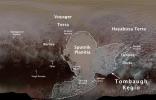
|
-
PIA21944:
-
First Official Pluto Feature Names
Full Resolution:
TIFF
(7.059 MB)
JPEG
(463.9 kB)
|

|
2017-09-06 |
2014 MU69
|
New Horizons
|
|
900x591x3 |
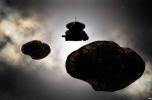
|
-
PIA21943:
-
Artist Concept: Flying by a 2014 MU69
Full Resolution:
TIFF
(1.185 MB)
JPEG
(40.11 kB)
|

|
2017-08-04 |
2014 MU69
|
New Horizons
|
|
2016x1628x3 |
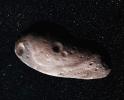
|
-
PIA21868:
-
Artist's Concept of 2014 MU69 as a Single Object
Full Resolution:
TIFF
(7.083 MB)
JPEG
(767.2 kB)
|

|
2017-08-04 |
2014 MU69
|
New Horizons
|
|
2016x1628x3 |
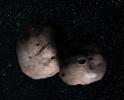
|
-
PIA21867:
-
A Kuiper Belt Pair? Artist's Concept of 2014 MU69 as a Binary Object
Full Resolution:
TIFF
(5.863 MB)
JPEG
(388.3 kB)
|

|
2017-07-19 |
Kuiper Belt Object
|
New Horizons
|
LORRI
MVIC
|
559x345x3 |
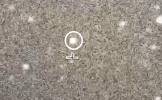
|
-
PIA21865:
-
Wink of a Star
Full Resolution:
TIFF
(194.8 kB)
JPEG
(38.14 kB)
|

|
2017-04-04 |
|
New Horizons
|
LORRI
|
1024x1024x3 |
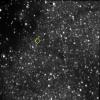
|
-
PIA21588:
-
A KBO among the Stars
Full Resolution:
TIFF
(845.9 kB)
JPEG
(414.8 kB)
|

|
2016-08-31 |
|
New Horizons
|
LORRI
|
2250x2250x3 |
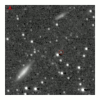
|
-
PIA21024:
-
New Horizons Spies a Kuiper Belt

Full Resolution:
TIFF
(1.403 MB)
JPEG
(1.134 MB)
|

|
2016-07-14 |
Pluto
|
New Horizons
|
|
1728x1011x1 |
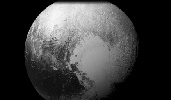
|
-
PIA20742:
-
Imagine a Landing on Pluto

Full Resolution:
TIFF
(969.4 kB)
JPEG
(123.9 kB)
|

|
2016-05-18 |
Pluto
|
New Horizons
|
LORRI
|
1024x768x3 |
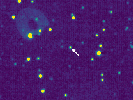
|
-
PIA20589:
-
New Horizons Collects First Science on a Post-Pluto Object

Full Resolution:
TIFF
(495.2 kB)
JPEG
(421.7 kB)
|

|
2016-03-03 |
|
|
CHIMERA
|
1007x1020x3 |

|
-
PIA20347:
-
Versatile Instrument to Scout for Kuiper Belt Objects
Full Resolution:
TIFF
(3.083 MB)
JPEG
(105.7 kB)
|

|
2015-10-23 |
Pluto
|
New Horizons
|
LORRI
|
1920x1080x1 |
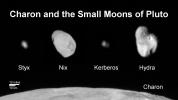
|
-
PIA20033:
-
Family Portrait of Pluto's Moons
Full Resolution:
TIFF
(834.9 kB)
JPEG
(107.3 kB)
|

|
2015-07-01 |
Charon
|
New Horizons
|
MVIC
|
938x1458x3 |

|
-
PIA19692:
-
True Color of Pluto and Charon

Full Resolution:
TIFF
(1.371 MB)
JPEG
(126.7 kB)
|

|
2014-11-10 |
|
Spitzer Space Telescope
|
Spitzer Space Telescope
|
3300x4000x3 |

|
-
PIA18900:
-
Sibling Star Systems? Dust Structures Suggest So
Full Resolution:
TIFF
(39.62 MB)
JPEG
(590.8 kB)
|

|
2014-06-11 |
Phoebe
|
Cassini-Huygens
|
ISS - Narrow Angle
ISS - Wide Angle
|
5182x3455x1 |
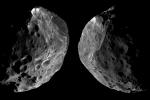
|
-
PIA18411:
-
Arrival and Departure at Phoebe
Full Resolution:
TIFF
(17.93 MB)
JPEG
(1.192 MB)
|

|
2013-01-08 |
|
Herschel Space Observatory
Spitzer Space Telescope
|
|
4267x2400x3 |
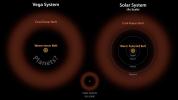
|
-
PIA16611:
-
Vega: Two Belts and the Possibility of Planets
Full Resolution:
TIFF
(30.74 MB)
JPEG
(304.7 kB)
|

|
2011-03-29 |
Kuiper Belt
|
|
|
2100x1995x3 |
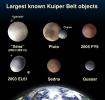
|
-
PIA17308:
-
Transneptunian Object Sizes (Artist's Concept)
Full Resolution:
TIFF
(12.57 MB)
JPEG
(293.9 kB)
|

|
2009-11-04 |
HR 8799
|
Spitzer Space Telescope
|
MIPS
|
1100x1100x3 |
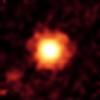
|
-
PIA12336:
-
A Picture of Unsettled Planetary Youth
Full Resolution:
TIFF
(1.213 MB)
JPEG
(40.46 kB)
|

|
2008-10-27 |
Epsilon Eridani
|
Spitzer Space Telescope
|
|
3000x2400x3 |
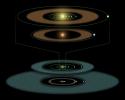
|
-
PIA11376:
-
Young Solar System in the Making (Artist Concept)
Full Resolution:
TIFF
(21.6 MB)
JPEG
(405.7 kB)
|

|
2008-10-27 |
Epsilon Eridani
|
Spitzer Space Telescope
|
|
3000x1600x3 |
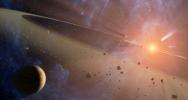
|
-
PIA11375:
-
Double the Rubble (Artist Concept)
Full Resolution:
TIFF
(14.4 MB)
JPEG
(249.1 kB)
|

|
2006-04-11 |
|
Hubble Space Telescope
|
|
4800x3600x3 |
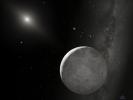
|
-
PIA17801:
-
Hubble Finds 'Tenth Planet' is Slightly Larger than Pluto (Artist Concept)
Full Resolution:
TIFF
(51.87 MB)
JPEG
(1.187 MB)
|

|
2004-12-09 |
|
Spitzer Space Telescope
|
|
1364x1024x3 |
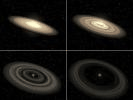
|
-
PIA07099:
-
The Evolution of a Planet-Forming Disk (Artist's Concept Animation)

Full Resolution:
TIFF
(4.195 MB)
JPEG
(75.87 kB)
|

|
2004-12-09 |
|
Spitzer Space Telescope
|
|
1386x956x3 |
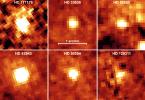
|
-
PIA07098:
-
Is There Anybody Home?
Full Resolution:
TIFF
(1.3 MB)
JPEG
(126 kB)
|

|
2004-06-23 |
Phoebe
|
Cassini-Huygens
|
ISS - Narrow Angle
|
720x539x3 |
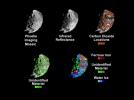
|
-
PIA06400:
-
Phoebe's Mineral Distribution
Full Resolution:
TIFF
(193.7 kB)
JPEG
(34.47 kB)
|

|
2004-06-23 |
Phoebe
|
Cassini-Huygens
|
ISS - Narrow Angle
|
2050x2900x1 |

|
-
PIA06073:
-
Phoebe Hi-Resolution Mosaic
Full Resolution:
TIFF
(3.661 MB)
JPEG
(511 kB)
|

|
2004-03-15 |
Sedna
|
|
Samuel Oschin Telescope
|
640x480x5 |
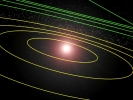
|
-
PIA05565:
-
Sedna Orbit Animation

Full Resolution:
|

|
2004-03-15 |
Sedna
|
|
Samuel Oschin Telescope
|
2499x2499x3 |
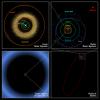
|
-
PIA05569:
-
Sedna Orbit Comparisons
Full Resolution:
TIFF
(2.507 MB)
JPEG
(554.8 kB)
|

|
2003-12-18 |
|
Spitzer Space Telescope
|
MIPS
|
658x430x3 |
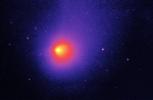
|
-
PIA04943:
-
Comet Schwassmann-Wachmann I
Full Resolution:
TIFF
(611.8 kB)
JPEG
(26.98 kB)
|

 Planetary Data System
Planetary Data System










































